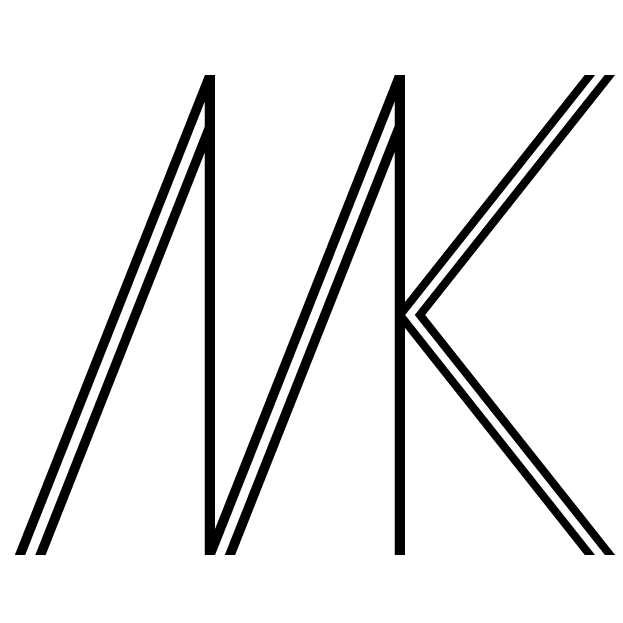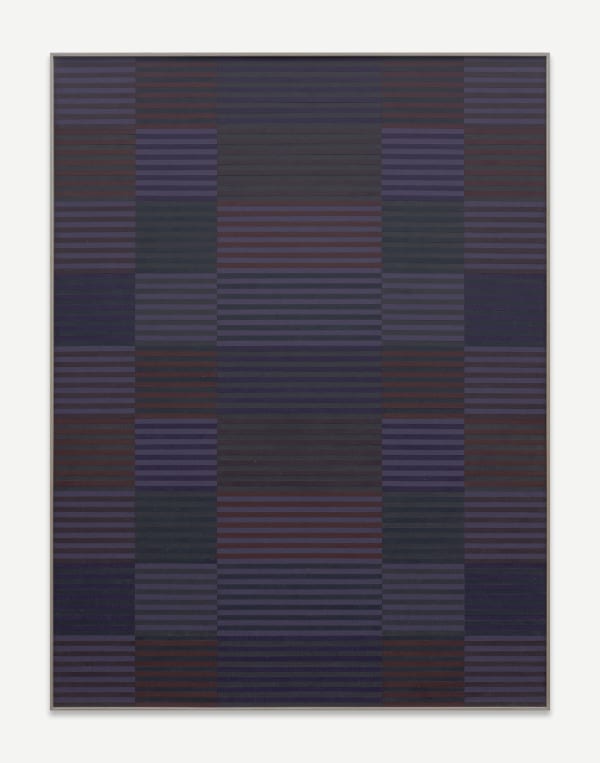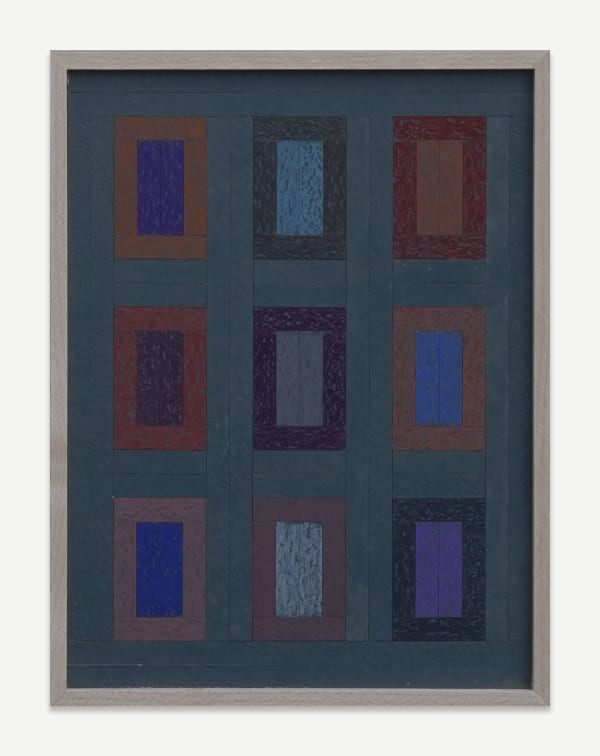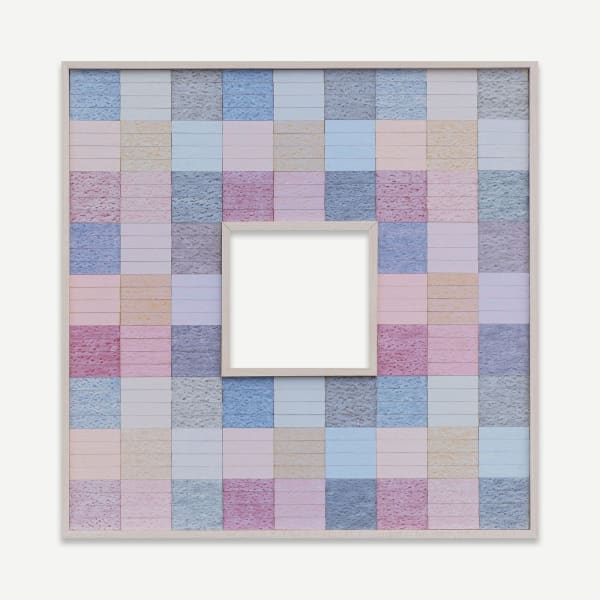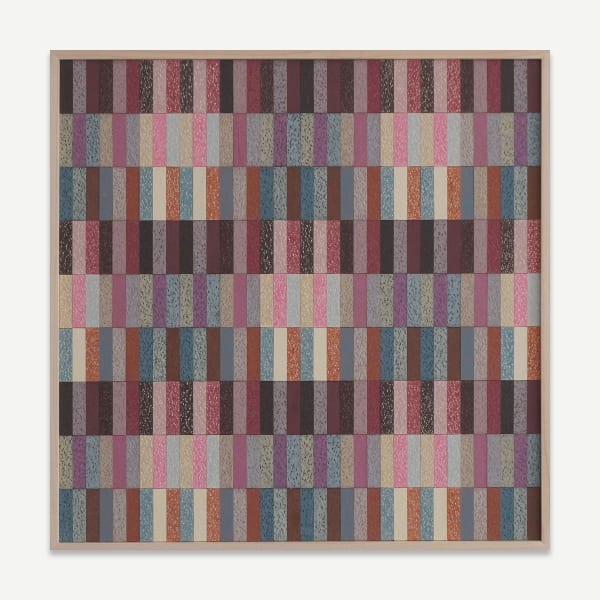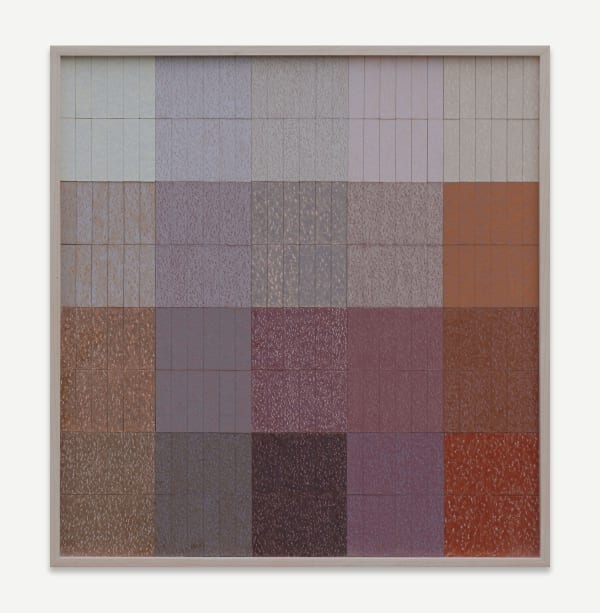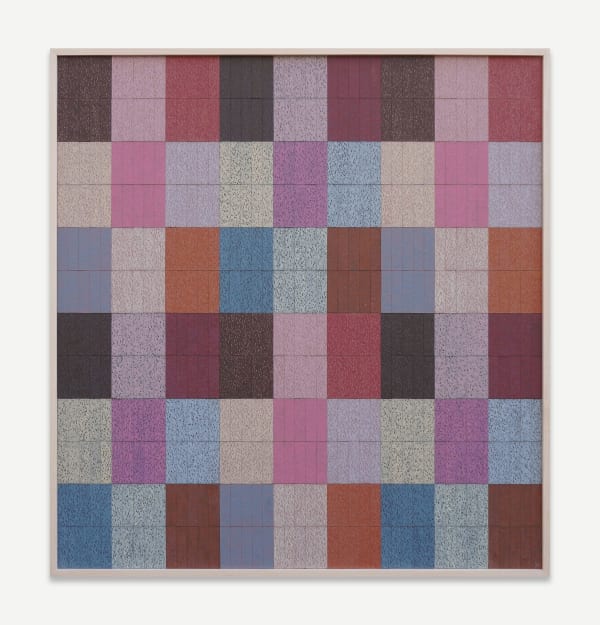Will Sears
Overview
B. 1987, Philadelphia, PA
Described as calming and meditative, Sears’ work is composed of restrained color palettes and repetitive construction–a repetition that parallels meditative practices of rhythmic breathing and the tactile counting of prayer beads. Each composition presents a duality that is revealed over time, exploring how color and material relate to space in different ways. The gradually unfolding color relationships create a sense of push and pull, which yields a perceived sense of depth as the viewer tries to make sense of the hierarchical relationship between colors.
The artist embraces the inevitable imperfection of the human hand while crafting each assemblage. The slightly misaligned corners and the burnished edges of the tiny wood components offer a reminder of surface; a different function of space than the perceived one. Sears starts each composition by painting sheets of plywood in latex paint, applied with a heavy-nap roller to create a pronounced texture. After the paint dries and has been lightly sanded, he cuts the sheets into smaller, thin rectangular pieces on a table saw. The slightly textured surface allows him to rub colored pencil over the raised grain part of the paint, producing a layered, dual-color ‘noise’ that activates the surface and can subtly push or pull the hue of the underlying color. Once cut and colored, the blocks are assembled like a mosaic but set flush against one another, without grout lines, so the seams read as intentional edges. Handmade frames are integral to each piece, reinforcing the object's presence as an art object while containing the visual field.
Sears’ work draws on both color-field and op-art strategies, and the artist frequently references Bauhaus ideas of design and structure—simple geometric elements used to explore color and spatial relationships. Important influences include Paul Klee, Anni Albers, and Josef Albers, as well as Agnes Martin, who has been particularly influential in regards to Sears’ line and grid-based compositions that offer a seemingly endless field for play.
Will Sears holds a BFA from the School of Art and Design, College of Visual and Performing Arts, at Syracuse University, NY. He has participated in artist residencies at the Ellis-Beauregard Foundation Residency in Rockland, ME; at IAPP in Washington, D.C.; at Hewnoaks in Lovell, ME; and at Quimby Colony Salt Water Farm in Lincolnville, ME. The artist is the recipient of numerous awards and grants, including a Fellowship at Vermont Studio Center in Johnson, VT; a Maine Arts Commission Individual Project Grant; and a Kindling Fund Grant through Space Gallery and the Andy Warhol Foundation.
Sears’ work has been featured in solo, two-person, and group exhibitions in cities such as Tokyo, Washington, D.C., Boston, Brooklyn, Los Angeles, and San Francisco, as well as throughout his home state of Maine. In 2026, the artist’s work will be featured in a solo exhibition at the Center for Maine Contemporary Art in Rockland. Sears has been commissioned for a number of public murals, which can be found throughout Maine in Biddeford, Portland, and Augusta, and his work has been in numerous publications including Art Maze Magazine, Downeast Magazine, Art New England, and Maine Home & Design. The artist lives and works in South Portland, ME.
Described as calming and meditative, Sears’ work is composed of restrained color palettes and repetitive construction–a repetition that parallels meditative practices of rhythmic breathing and the tactile counting of prayer beads. Each composition presents a duality that is revealed over time, exploring how color and material relate to space in different ways. The gradually unfolding color relationships create a sense of push and pull, which yields a perceived sense of depth as the viewer tries to make sense of the hierarchical relationship between colors.
The artist embraces the inevitable imperfection of the human hand while crafting each assemblage. The slightly misaligned corners and the burnished edges of the tiny wood components offer a reminder of surface; a different function of space than the perceived one. Sears starts each composition by painting sheets of plywood in latex paint, applied with a heavy-nap roller to create a pronounced texture. After the paint dries and has been lightly sanded, he cuts the sheets into smaller, thin rectangular pieces on a table saw. The slightly textured surface allows him to rub colored pencil over the raised grain part of the paint, producing a layered, dual-color ‘noise’ that activates the surface and can subtly push or pull the hue of the underlying color. Once cut and colored, the blocks are assembled like a mosaic but set flush against one another, without grout lines, so the seams read as intentional edges. Handmade frames are integral to each piece, reinforcing the object's presence as an art object while containing the visual field.
Sears’ work draws on both color-field and op-art strategies, and the artist frequently references Bauhaus ideas of design and structure—simple geometric elements used to explore color and spatial relationships. Important influences include Paul Klee, Anni Albers, and Josef Albers, as well as Agnes Martin, who has been particularly influential in regards to Sears’ line and grid-based compositions that offer a seemingly endless field for play.
Will Sears holds a BFA from the School of Art and Design, College of Visual and Performing Arts, at Syracuse University, NY. He has participated in artist residencies at the Ellis-Beauregard Foundation Residency in Rockland, ME; at IAPP in Washington, D.C.; at Hewnoaks in Lovell, ME; and at Quimby Colony Salt Water Farm in Lincolnville, ME. The artist is the recipient of numerous awards and grants, including a Fellowship at Vermont Studio Center in Johnson, VT; a Maine Arts Commission Individual Project Grant; and a Kindling Fund Grant through Space Gallery and the Andy Warhol Foundation.
Sears’ work has been featured in solo, two-person, and group exhibitions in cities such as Tokyo, Washington, D.C., Boston, Brooklyn, Los Angeles, and San Francisco, as well as throughout his home state of Maine. In 2026, the artist’s work will be featured in a solo exhibition at the Center for Maine Contemporary Art in Rockland. Sears has been commissioned for a number of public murals, which can be found throughout Maine in Biddeford, Portland, and Augusta, and his work has been in numerous publications including Art Maze Magazine, Downeast Magazine, Art New England, and Maine Home & Design. The artist lives and works in South Portland, ME.
Exhibitions
Works
